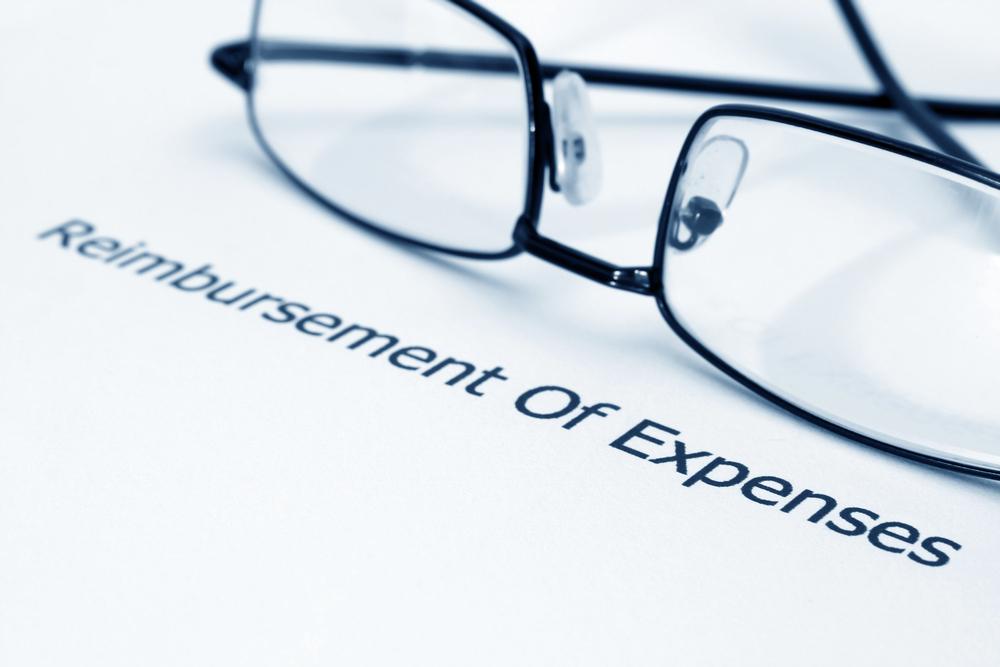Managing employee expense reimbursements is a crucial aspect of running a small business. It goes beyond simply paying back employees for out-of-pocket expenses; it involves establishing clear policies, ensuring compliance with tax regulations, and maintaining accurate financial records. Properly handling reimbursements not only keeps your finances in order but also fosters trust and satisfaction among your employees. Mishandling this process can lead to financial discrepancies, tax issues, and strained employee relations.
In this guide, we’ll explore the best practices for handling employee expense reimbursements in small businesses. We’ll delve into the importance of clear policies, the benefits of utilizing technology, and strategies for maintaining compliance—all explained in detail to help you implement them effectively.
Understanding the Importance of Expense Reimbursements
Expense reimbursements are more than administrative tasks; they reflect your company’s commitment to fairness and transparency. When employees spend their own money on business-related expenses, they expect timely and accurate reimbursement. This process directly impacts:
- Financial Accuracy: Accurate expense tracking ensures your financial statements truly represent your business activities. It aids in budgeting, forecasting, and making informed financial decisions.
- Tax Compliance: The IRS has strict guidelines on how businesses should handle employee reimbursements. Adhering to these regulations helps you avoid audits, penalties, and potential legal issues.
- Employee Satisfaction: Prompt and fair reimbursements contribute to positive employee morale. It shows that you value their contributions and respect their personal finances.
- Legal Protection: Clear and consistent reimbursement practices protect both your business and your employees by minimizing misunderstandings and disputes.
Developing a Clear Expense Reimbursement Policy
A well-defined expense reimbursement policy is the foundation of effective expense management. It sets expectations, provides guidelines, and serves as a reference for both employees and management.
Key Components of a Strong Policy:
- Eligible Expenses: Clearly specify what types of expenses are reimbursable. Common categories include travel (airfare, lodging, transportation), meals during business trips, office supplies, and professional development costs like conferences or training.
- Submission Guidelines: Outline the process for submitting expenses. This includes the required forms or systems to use, the information that must be provided (such as dates, amounts, and business purposes), and any necessary documentation like receipts.
- Approval Process: Define who is responsible for approving expenses and the criteria they will use. This might involve department managers or the finance team reviewing submissions for compliance with the policy.
- Reimbursement Timing: Set expectations for how quickly employees will be reimbursed after submitting their expenses. Providing a specific timeframe, such as within 10 business days, helps manage employee expectations.
- Non-Reimbursable Expenses: List expenses that are not eligible for reimbursement to prevent confusion. This could include personal entertainment, fines or penalties, and expenses that lack proper documentation.
Tips for Implementation:
- Communicate Clearly: Distribute the policy to all employees and make it easily accessible. Consider holding training sessions to explain the policy and answer questions.
- Consistency: Apply the policy uniformly to all employees to maintain fairness and avoid potential legal issues.
- Regular Updates: Review and update the policy periodically to reflect changes in business needs or tax laws.
Implementing an Accountable Plan
An accountable plan is an IRS-approved method for reimbursing employees for business expenses without treating the reimbursements as taxable income. To qualify as an accountable plan, your reimbursement process must meet three criteria:
- Business Connection: Expenses must have a direct relationship to your business activities.
- Substantiation: Employees must provide adequate documentation, such as receipts and expense reports, detailing the amount, date, place, and business purpose of each expense.
- Return of Excess Amounts: If employees receive more reimbursement than their actual expenses (for example, through advances), they must return the excess within a reasonable time.
Benefits of an Accountable Plan:
- Tax Efficiency: Reimbursements are not considered taxable income for employees, reducing their tax burden and simplifying payroll reporting.
- Compliance: Following IRS guidelines minimizes the risk of audits and penalties.
- Simplicity: It streamlines accounting procedures, as you don’t need to include reimbursements as wages on W-2 forms.
To implement an accountable plan, integrate these criteria into your reimbursement policy and ensure that both management and employees adhere to them.
Utilizing Technology for Efficient Expense Management
Leveraging technology can significantly streamline your expense reimbursement process. Expense management software offers various features that simplify submission, approval, and record-keeping.
Advantages of Using Expense Management Software:
- Automation: Employees can submit expenses electronically, and the system can automatically route them for approval, reducing manual effort and errors.
- Real-Time Tracking: Managers can monitor expenses as they’re submitted, allowing for better budget management and oversight.
- Policy Enforcement: The software can flag expenses that don’t comply with your policy, such as those exceeding set limits or lacking required documentation.
- Reporting and Analytics: Generate detailed reports to analyze spending patterns, identify cost-saving opportunities, and make informed financial decisions.
Popular Tools for Small Businesses:
- Expensify: User-friendly with mobile capabilities, allowing employees to snap pictures of receipts and submit expenses on the go.
- Zoho Expense: Integrates with other Zoho products, offering a comprehensive suite for business management.
- Concur: Scalable for growing businesses, providing robust features for expense, travel, and invoice management.
When selecting software, consider factors like ease of use, cost, scalability, and integration with your existing accounting systems.
Establishing a Standardized Submission Process
A consistent and straightforward submission process ensures that employees know exactly how to report expenses, reducing confusion and errors.
Steps to Create an Effective Process:
- Provide Clear Instructions: Create a detailed guide or checklist that explains each step of the submission process.
- Standard Forms or Templates: Use uniform expense report forms or digital submission formats to collect consistent information.
- Set Submission Deadlines: Require expenses to be submitted within a specific timeframe, such as within 30 days of the expense date, to ensure timely processing.
- Define Required Documentation: Specify what supporting documents are needed for different types of expenses (e.g., receipts for meals over a certain amount, mileage logs for vehicle use).
- Establish Approval Hierarchy: Clearly outline who approves expenses and the sequence of approvals, if multiple levels are involved.
Tips for Success:
- Training: Offer training sessions or tutorials, especially when introducing new software or procedures.
- Accessibility: Ensure that submission forms and tools are easily accessible to all employees, possibly through a company intranet or shared drive.
- Support: Provide a point of contact for employees to ask questions or seek assistance with the process.
Monitoring and Enforcing Compliance
Maintaining compliance with your expense reimbursement policy is essential to prevent fraud, errors, and financial mismanagement.
Strategies for Effective Monitoring:
- Regular Audits: Conduct periodic reviews of expense reports to verify that they adhere to policy guidelines and IRS regulations.
- Data Analysis: Use software tools to analyze expense data, identifying unusual patterns or outliers that may indicate issues.
- Feedback Mechanisms: Encourage employees to report concerns or suggest improvements to the reimbursement process.
Handling Non-Compliance:
- Address Issues Promptly: If discrepancies are found, communicate with the employee to resolve them quickly.
- Documentation: Keep records of any policy violations and the actions taken, which can be important for legal protection.
- Consistent Enforcement: Apply the policy equally to all employees to maintain fairness and integrity.
Ensuring Timely Reimbursements
Prompt reimbursement is crucial for maintaining good employee relations and demonstrating respect for their personal finances.
Best Practices for Timely Reimbursements:
- Set Clear Expectations: Inform employees of the expected timeframe for reimbursements, such as within two weeks of submission.
- Streamline Approvals: Simplify the approval process by reducing unnecessary steps or utilizing automation to prevent bottlenecks.
- Allocate Resources: Ensure your finance team has the necessary resources and staffing to process reimbursements efficiently.
- Communicate Delays: If delays occur, proactively communicate with affected employees, explaining the reason and expected resolution time.
Timely reimbursements reinforce a culture of respect and trust within your organization, contributing to overall employee satisfaction.
Maintaining Accurate Records
Accurate record-keeping is vital for compliance, financial analysis, and potential audits.
Key Record-Keeping Practices:
- Digital Storage: Utilize secure digital systems to store expense reports, receipts, and related communications. This facilitates easy retrieval and reduces physical storage needs.
- Organized Filing: Establish a logical filing system, categorizing records by date, employee, or expense type.
- Retention Policy: Determine how long to keep records based on legal requirements and business needs. The IRS typically recommends retaining records for at least seven years.
- Backup Procedures: Regularly back up digital records to prevent data loss due to technical issues or cyber threats.
Proper records provide a clear audit trail and support financial transparency, which is essential for stakeholders and regulatory bodies.
Understanding Tax Implications
Expense reimbursements can have significant tax consequences if not handled correctly.
Important Tax Considerations:
- Accountable vs. Non-Accountable Plans: As previously mentioned, reimbursements under an accountable plan are not taxable to the employee. Non-accountable plans, or reimbursements that don’t meet IRS criteria, may result in taxable income for the employee.
- Documentation Requirements: Inadequate documentation can disqualify expenses from being treated under an accountable plan, leading to tax liabilities.
- Per Diem Rates: If using per diem allowances for travel expenses, ensure they align with IRS-approved rates to avoid tax complications.
- Tax Reporting: Accurately report reimbursements on tax forms as required. Consult a tax professional to ensure compliance.
Seeking Professional Guidance:
Given the complexity of tax laws and the potential for costly mistakes, it’s advisable to consult with an accountant or tax advisor who can provide tailored advice for your business.
Encouraging Open Communication
Fostering an environment where employees feel comfortable discussing expense-related matters enhances compliance and improves processes.
Communication Strategies:
- Open Door Policy: Encourage employees to ask questions or express concerns about the reimbursement process without fear of negative repercussions.
- Regular Updates: Keep employees informed about any changes to the policy or procedures through meetings, emails, or internal newsletters.
- Feedback Opportunities: Provide channels for employees to offer suggestions for improving the expense management system, such as anonymous surveys or suggestion boxes.
- Recognition: Acknowledge and appreciate employees who consistently adhere to policies and contribute positively to the process.
By maintaining open lines of communication, you can identify issues early, make necessary adjustments, and demonstrate that you value employee input.
Conclusion
Effectively handling employee expense reimbursements is essential for the smooth operation and financial health of your small business. By developing clear policies, leveraging technology, establishing standardized procedures, and fostering open communication, you can create an efficient reimbursement system that benefits both your employees and your company.
Proper management of expense reimbursements ensures compliance with tax laws, enhances financial accuracy, and promotes a positive work environment. It’s an investment in your business’s integrity and your employees’ satisfaction.
At TMD Accounting, we understand the challenges small businesses face in managing financial processes. With nearly 40 years of experience, our team is equipped to provide personalized solutions that streamline your expense reimbursement system and ensure compliance with all relevant regulations.
Ready to optimize your expense reimbursement process?
Contact TMD Accounting today for expert guidance and support tailored to your small business needs.
FAQs
1. What expenses are typically eligible for reimbursement?
Eligible expenses usually include costs incurred by employees while performing their job duties. Common examples are travel expenses (airfare, hotel stays, car rentals), meals during business trips, mileage when using a personal vehicle for work purposes, office supplies, and professional development fees such as training courses or conferences. Your company’s expense policy should clearly define what is considered reimbursable.
2. How can technology help in managing expense reimbursements?
Technology, such as expense management software, can automate and streamline the reimbursement process. These tools allow employees to submit expenses digitally, often through mobile apps, by uploading photos of receipts. They can automate approval workflows, enforce policy compliance by flagging non-compliant expenses, and provide real-time tracking and analytics. This reduces manual errors, saves time, and enhances overall efficiency.
3. What should I do if an employee submits an expense without proper documentation?
If an employee submits an expense without the required documentation, communicate with them promptly to request the missing information. Explain the importance of proper documentation for compliance and reimbursement processing. If the employee cannot provide the necessary proof, you may need to deny the reimbursement to adhere to your policy and IRS regulations. Consistency in enforcing documentation requirements is crucial.
4. Why is an accountable plan important for tax purposes?
An accountable plan ensures that expense reimbursements are not considered taxable income for employees, which means they don’t have to pay income tax on these amounts, and employers don’t have to withhold payroll taxes on them. To qualify, the plan must meet IRS requirements regarding business connection, substantiation, and the return of excess amounts. This benefits both the employer and employees by simplifying tax reporting and reducing tax liabilities.






















